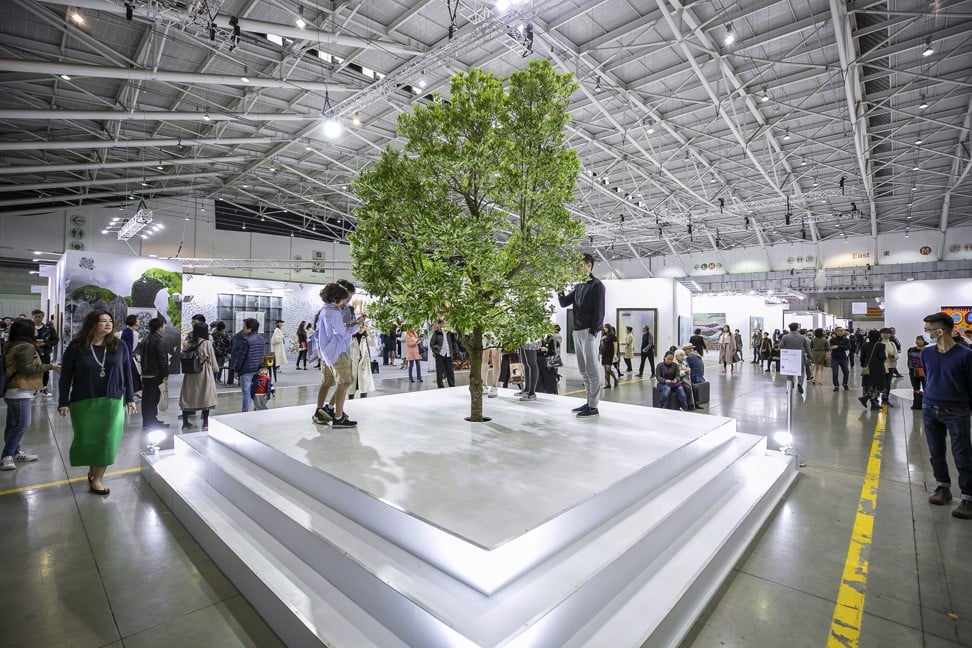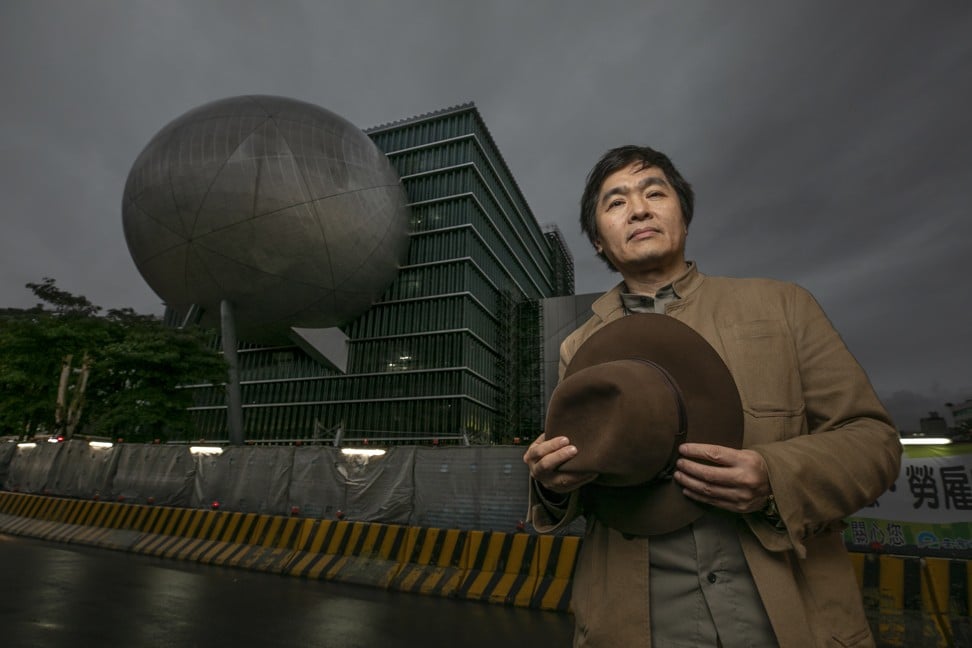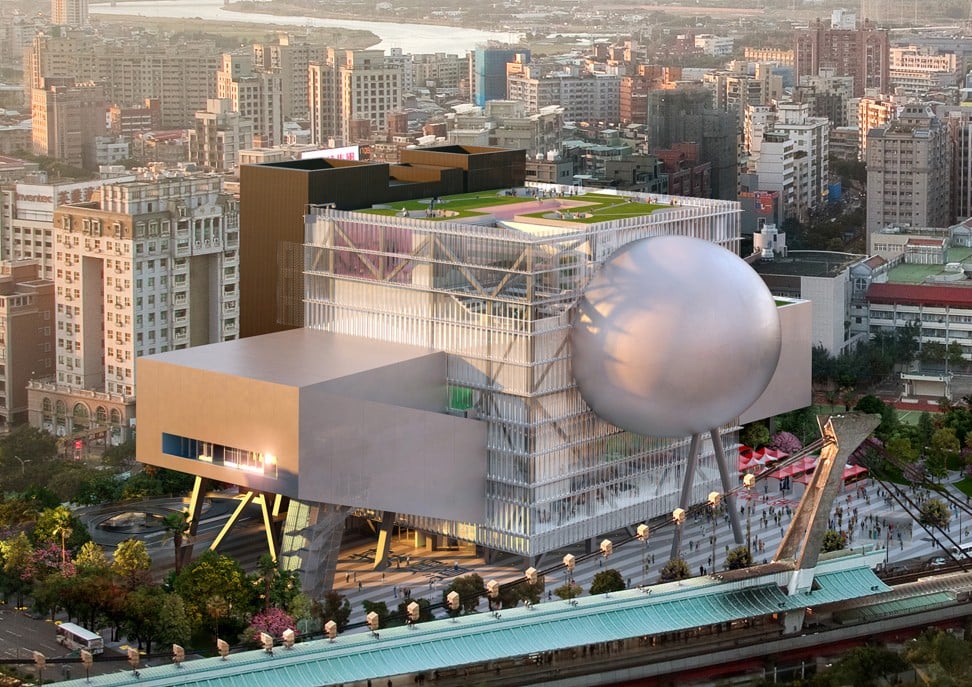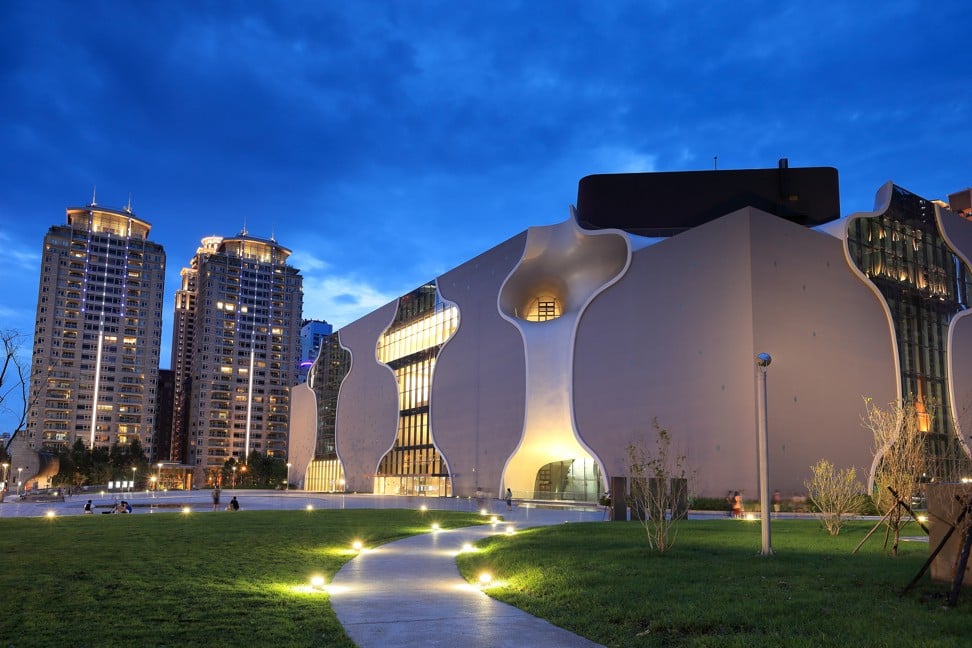Taiwan arts scene thrives in spite of Beijing isolation tactics – new venues draw more diverse audiences
- The island’s arts scene is enjoying something of a renaissance, a slew of new spaces and troupes having been established to appeal to domestic and – it’s hoped – international crowds

It will come as a surprise to many to learn that the world’s largest indoor performing arts venue is not in New York, London or Beijing, but Kaohsiung, the industrial city in southern Taiwan. Last October, the futuristic, 9.9-hectare National Kaohsiung Centre for the Arts opened on the site once occupied by the Weiwuying military base. Within are four performance halls and an innovative outdoor theatre that gives the impression it is sliding off a giant, undulating roof.
Weiwuying, as the centre in Taiwan’s third-largest city is known, took seven years to build, at a cost of more than NT$10 billion (US$324 million). One of the island’s first major performance venues outside Taipei, the facility was intended by then president Chen Shui-bian as a grand gesture in the rejuvenation of Taiwan’s poorer south, and to attract cultural activities away from the northern capital. It is just one of a slew of impressive venues that have been opening in what is proving to be a vibrant period for the island’s sophisticated arts scene. But it is a success story that is often drowned out by the drumbeat of nationalism heard across the Taiwan Strait: Chinese President Xi Jinping threatened, in a New Year speech, to take back the island by force if necessary after 70 years of separation.
The island’s contemporary art scene emerged in 1987, when nearly four decades of martial law ended and Taiwan diverged further politically from the mainland, embracing multi-party democracy and freedom of expression.
Today, Taiwan faces growing political isolation, maintaining diplomatic relations with just 17 countries, a number of former allies having bowed to pressure from Beijing and severed ties with Taipei following the election in 2016 of independence-leaning President Tsai Ing-wen. But that has done little to hinder the island’s burgeoning arts scene, or hamper the fostering of cultural overseas relationships.
According to the Ministry of Culture, between 2012 and 2017, the number of theatre groups on the island rose by a third, to 375, while the number of dance groups doubled from 51 to 105 over the same period. New contemporary art fair Taipei Dangdai was launched in January by a group that was part of the team behind Art HK, the forerunner of Art Basel Hong Kong. And dance legend Lin Hwai-min’s international farewell tour is introducing new audiences to Cloud Gate Dance Theatre, Taiwan’s most prominent performing arts company, which is set to be given new impetus when Lin’s protégé, Cheng Tsung-lung, takes over as artistic director, in 2020.
In the capital, the yet-to-be-completed Taipei Performing Arts Centre (TPAC) began rolling out pre-opening programmes in 2013, many of which have involved international exchanges.
“Artists from Southeast Asia, Hong Kong, Australia and New Zealand have come here on our residency programmes and we have sent young Taiwanese artists abroad,” says Austin Wang Meng-chao, the centre’s director. “This happened regularly even before President Tsai’s ‘New Southbound Policy’, designed to strengthen economic and cultural ties with Southeast Asia.”
Located next to Shilin Night Market and designed by superstar architect Rem Koolhaas, TPAC is expected to add a whole new dimension to the Taipei arts scene. However, originally due for completion in 2016, the project has been plagued by delays. Construction is scheduled to finish in 2020 but the opening date has not been set, Wang says.
Other unfortunate parallels can be drawn with Hong Kong’s West Kowloon Cultural District. Both ventures are over budget and both were recently blindsided when their main contractors abruptly declared bankruptcy and halted work. Both have received generous government funding for construction but have been subject to concerns over where long-term operational financing will come from.

Undeterred and working from an unusual temporary headquarters – a disused municipal indoor swimming centre, the pools having been drained, covered and turned into rehearsal rooms – Wang and his team have established a regional performing arts exchange programme called “Adam” and taken over the reins of three established annual events: the Taipei Arts Festival, Taipei Fringe Festival and Taipei Children’s Arts Festival.
Adam, which stands for Asia Discovers Asia Meeting for Contemporary Performance, provides training for emerging artists. It has partnered with the Australia Council for the Arts, the National Arts Council in Singapore and the West Kowloon Cultural District, among other organisations, in a bid to reach out to the region’s artists and curators. Last year, for example, mainland duo Xiao Ke and Zi Han brought their new theatre project, Chiname, to Taipei, and the Centre National de la Danse, in Paris, conducted workshops for professional dancers in the city, both as part of Adam.
TPAC further demonstrated its international outlook last year by appointing the first non-Taiwanese curator of the Taipei Arts Festival. Wang credits Tang Fu-Kuen with the transformation of what had, until the Singaporean’s arrival, been considered a conservative festival.
“It used to be known for being a ‘name-brand festival’ with big, bought-in shows shown at the National Theatre,” says Wang. “People would instantly recognise the artists and that was the main reason for buying a ticket. But there was no residual benefit for the local art scene, and it was elitist.”

Tang experimented with unconventional venues, commissioned half the shows in the festival and reached out to new demographics by launching themed programmes such as “Queer Nights”. It was a risky move at a time when “bums-on-seats” were considered a key performance indicator for public arts programmes.
“Audience numbers for the Taipei Arts Festival in 2018 were down 20 per cent from 2017, because most of the programmes were brand new. We also didn’t put on too many big shows. We used lots of small spaces including venues with just 30 people per show,” says Wang. “But we did attract a new audience.”
The striking TPAC building has slowly taken shape. It has an unusual aluminium-clad facade with a round “nose” protruding from an assemblage of cubes and oblongs. That sphere will house the 800-seat Proscenium Playhouse, which can be used as an extension to the 1,500-seat main auditorium and another 800-seat theatre to create a “super theatre” that will offer the rare option of staging works that require a 100-metre-long performance space.
But Koolhaas’ vision for the centre is so technically demanding that it has proved to be a nightmare for Taipei Mass Rapid Transit, the city government-owned operator of the metro system, which has branched out into construction. Building work began in 2012 with local firm IEC Corporation as the main contractor. In November, the 36-year-old company declared bankruptcy, citing financial stress brought on by, among other things, the TPAC project. By then, the budget for the arts centre had increased from NT$4.8 billion to NT$6.8 billion.

TPAC was commissioned by the Taipei city government, and it can hardly have helped matters that the authority’s cultural affairs department – the branch overseeing the centre – has seen three heads quit in as many years.
Wang, though, says the arts centre’s mission has remained unchanged by the reshuffles.
“TPAC will be a festival theatre that is home to the three main annual festivals that we are already running,” Wang says. “We will add small festivals, too, like a circus festival, spread throughout the year. Festivals are an easier way of getting people’s attention and they have curatorial focus.”
There is no budget for any of this yet but Wang hopes the city government will approve fresh funding when an opening date is confirmed.
There is plenty of support for the arts elsewhere. Taiwan is keen to promote the fashionable idea of a creative economy, which the cultural sector can help boost. Under the Democratic Progressive Party (DPP) governments of Chen and Tsai there has also been an eagerness to establish a cultural identity for the island that is distinct from that of mainland China, and in doing so project soft power beyond the limited diplomatic and economic reach Taipei commands.

Other recently opened arts facilities include the National Taichung Theatre, which came online five years ago in the island’s second-largest city by population at a cost of NT$4.4 billion. The southern branch of the National Palace Museum was inaugurated in Chiayi, in 2015; delayed by contractor disputes and natural disasters, the project mushroomed to a final outlay of NT$8 billion. The following year, a theatre for traditional opera opened in Taipei – dubbed the Taiwan Traditional Theatre Centre, it had a price tag of NT$1.2 billion.
This infrastructure has been complemented by other new resources for artists. For 2019, the government’s budget for arts programming is NT$12.5 billion – that is nearly 16 per cent higher than that for last year and comes on top of already significant increases in cultural spending in the years since Tsai came to power. As Minister of Culture Cheng Li-chiun made clear in August last year, the cultural budget has been shifting away from building “hardware” for the arts to developing the “software”, which includes support for the work of artists and writers, promotion of international exchanges and heritage preservation.
This new emphasis has persuaded more young people to explore careers in the arts, says Betsy Lan Peh-chih, a theatre director and actor who teaches at Shu-Te University’s Department of Performing Arts, in Kaohsiung.
A reviewer of theatre-grant applications to the National Culture and Arts Foundation – a publicly funded entity similar to Hong Kong’s Arts Development Council – and a former curator of the Taipei Fringe Festival, Lan has witnessed growing diversity in the scene and a rise in the popularity of non-traditional performance venues such as bookshops and galleries. She is now seeing a geographical shift, too.

“Historically, many southern artists had to move to Taipei because that was where everything happened. But groups such as Our Theatre, in Chiayi, have moved back now, and mostly perform in Taiwanese instead of Mandarin, and often deal with very local issues,” she says.
The appearance of new theatre groups, though, is outpacing the growth in funding, she says. “There are a lot more emerging small theatre groups. So there is more competition. At the same time, the numbers haven’t necessarily translated into better quality shows.”
The north-south divide remains evident on the visual art side, says Wu Mali, a co-curator of the current edition of the Taipei Biennale, one of the pre-eminent contemporary art events in the region, which is held at Taipei’s Fine Art Museum.
“I moved to Kaohsiung [to teach] 13 years ago from Taipei,” she says. “Taichung and Kaohsiung still get a lot less resources than the capital. The reason I moved south was because Kaohsiung Teachers’ College was the first to set up a department called the Graduate Institution in Interdisciplinary Art,” she says. It was a forward-looking move in a city that is evolving from a heavily polluted industrial centre into a vibrant creative hub, one that is now under the ebullient leadership of a newly elected mayor, the maverick Han Kuo-yu.
Cross-strait tension doesn’t really affect us. We rarely collaborate with mainland groups anyway because it is difficult for mainland artists to get permission to come here
But there are storm clouds on the horizon for Taiwan’s arts scene. The island’s economy has slowed in tandem with that of mainland China, its closest trading partner. And some Taiwanese artists and curators are now persona non grata in Hong Kong, which has traditionally been a meeting place for artists from the mainland and the breakaway territory.
The Hong Kong government, falling in line with Beijing’s policy of excluding those who are perceived to be supporters of Taiwanese independence, barred Chang Tieh-chih from attending a cultural exchange conference in 2017. Chang, former editor of Hong Kong’s City magazine and a well-known writer, has been a vocal supporter of democracy campaigns and is now deputy secretary general of Taiwan’s General Association of Chinese Culture.
In December, Taiwanese heavy metal band Chthonic, founded by pro-independence lawmaker Freddy Lim Tshiong-tso, failed to secure a visa to perform in Hong Kong. There have also been instances of Taiwanese organisations that contain the word “National” in their official title joining sports and cultural events in Hong Kong only to discover that the word has been dropped in all publicity materials.
Wang says that while tensions between Beijing and Taipei discourage broad cultural exchanges, there is still plenty that can be done on a city-to-city or venue-to-venue level. For instance, Taipei mayor Ko Wen-je, an independent who favours closer ties with the mainland than does the DPP government, revived the Taipei-Shanghai twin-city forum in December.
For her part, Lan says she has not experienced difficulties in dealing with Hong Kong partners or other overseas groups.
“Cross-strait tension doesn’t really affect us. We rarely collaborate with mainland groups anyway because it is difficult for mainland artists to get permission to come here. Performances also get censored in the mainland.
“Taiwanese artists just carry on as before,” she shrugs. “We are used to living with a lot of political uncertainties. It’s a way of life for us.”